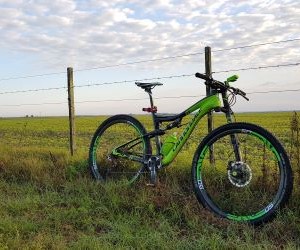Master endurance cycling in tropical climates with effective strategies. Learn hydration, heat adaptation, and training tips for peak performance.
HOW DO I TRAIN EFFICIENTLY FOR RACE SEASON?
Race season requires more than just logging miles—it demands a structured approach that balances intensity, endurance, and recovery. Cyclists who train efficiently arrive at peak fitness without burning out. By combining periodized training, targeted intervals, and proper rest, riders can sharpen their form, build resilience, and race at their best. This guide explores how to design a race-season plan that prioritizes quality over quantity while adapting to individual goals and schedules.

Understanding race season demands
Efficient training starts with recognizing what race season demands from the body. Unlike off-season base training, race season focuses on sharpening speed, sustaining high-intensity efforts, and fine-tuning tactical awareness. Cyclists must balance peak fitness with energy management across multiple events.
The challenge lies in avoiding overtraining. Too much volume or intensity can lead to fatigue and reduced performance. Efficient training requires focusing on key workouts that mimic race demands while maintaining recovery.
Key elements of race-season fitness
High-intensity intervals to prepare for surges and attacks.
Endurance rides to maintain aerobic capacity.
Strength and core stability to improve power transfer.
Recovery strategies to sustain performance across races.
By understanding these demands, cyclists can design a program that targets exactly what’s needed to perform on race day.
Structuring efficient training plans
Training efficiently means working smarter, not just harder. Structured plans use periodization—dividing training into phases—to build fitness progressively and peak at the right time. Each week balances endurance, intensity, and recovery to maximize gains without overloading the body.
Interval training for race readiness
VO₂ max intervals: 3–5 minutes at high intensity with equal rest to boost aerobic power.
Anaerobic sprints: 15–30 seconds all-out with full recovery for explosive speed.
Over-under intervals: alternating just below and above threshold to simulate race surges.
Balancing endurance and recovery
Longer endurance rides (2–4 hours) maintain aerobic efficiency, while rest days and active recovery sessions prevent burnout. Riders often see better results by reducing junk miles and focusing energy on purposeful sessions.
Strength and conditioning
Lower-body lifts like squats and deadlifts to sustain sprint and climbing power.
Core stability work to improve posture and pedaling efficiency.
Mobility exercises to prevent injury and enhance recovery.
An efficient plan integrates these elements into weekly cycles, gradually tapering volume before key races to ensure freshness and peak performance.
Race-season strategies and recovery
Efficient training continues beyond workouts—it extends into strategy, recovery, and race-day preparation. Many cyclists fail not from lack of fitness but from poor pacing, inadequate recovery, or mismanaged energy throughout the season.
Race-week preparation
Taper training volume while keeping intensity to stay sharp.
Prioritize sleep and hydration in the days leading up to the event.
Plan nutrition—carbohydrate loading for longer races or balanced fueling for shorter efforts.
Recovery between races
Use active recovery rides to promote circulation and reduce soreness.
Incorporate foam rolling, stretching, and massage to maintain mobility.
Track fatigue with tools like heart rate variability or training load metrics.
Long-term season management
Cyclists should avoid peaking too early in the season. Building in rest weeks and planning key races ensures energy and motivation last. Efficient training emphasizes sustainability—performing consistently rather than burning out after a few strong events.
By combining structured training, tactical race preparation, and disciplined recovery, riders can make the most of their race season while avoiding fatigue and injury.
YOU MAY ALSO BE INTERESTED






